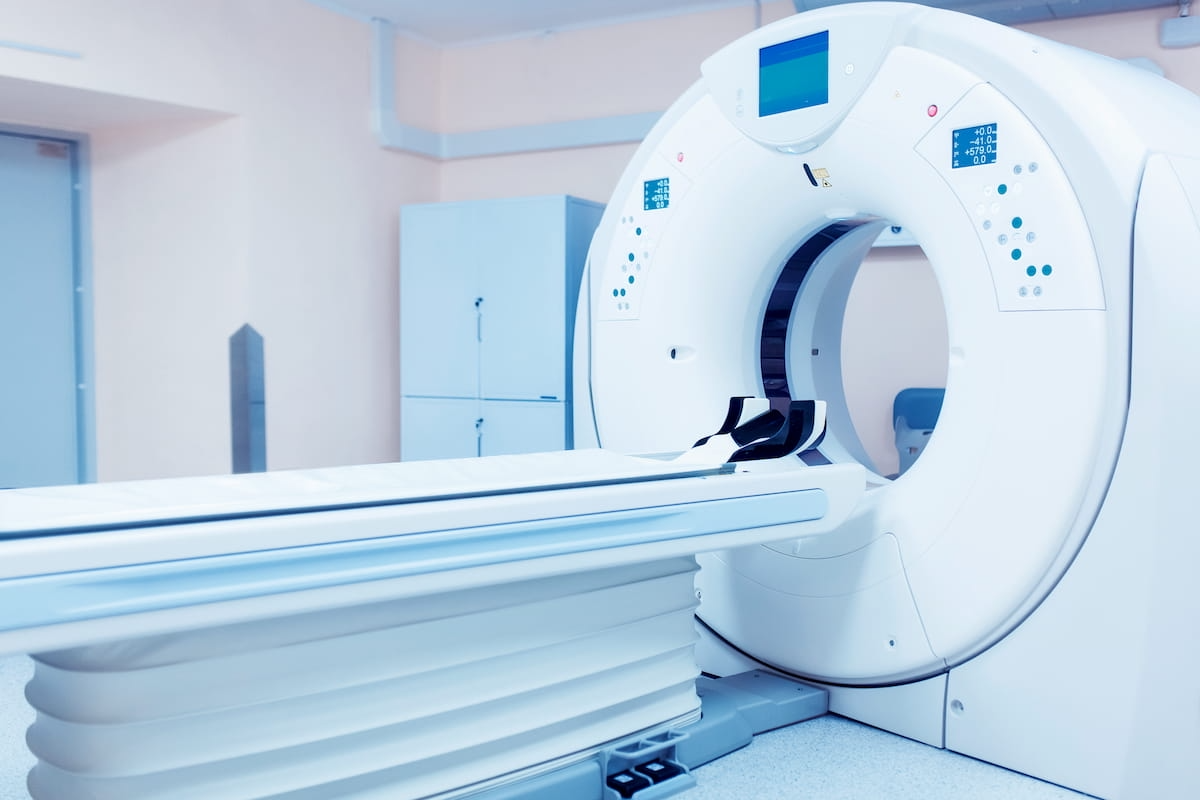Automated computed tomography (CT)-derived assessment of the visceral fat index yielded a higher capacity for predicting incident diabetes than predictive models from the American Diabetes Association (ADA) and the Leicester United Kingdom diabetes risk models.
That is one of the findings from a new retrospective study, recently published in Radiology, that examined the use of automated CT-derived markers to predict diabetes and associated cardiometabolic comorbidities. The researchers reviewed data from 32,166 Korean adults (mean age of 45) who underwent health screening with fluorine 18 fluorodeoxyglucose (18F FDG) positron emission tomography/computed tomography (PET/CT), according to the study. The study authors noted the cohort had a 6 percent prevalence and incidence of diabetes at baseline.
For the prediction of incident diabetes mellitus (DM), the researchers found that CT assessment of the visceral fat index had a Harrell C-index of 68 percent in men and 82 percent in women in contrast to 64 percent and 80 percent, respectively, for the ADA predictive model and 65 percent and 78 percent, respectively, for the Leicester United Kingdom diabetes risk model.
Adding CT-derived measurements of muscle area index, liver proton density fat fraction (PDFF) and aortic calcification to the visceral fat index assessment improved the Harrell C-index for predicting incident diabetes to 69 percent in men and 83 percent in women, according to the study authors.
“In our study, CT-derived visceral fat alone outperformed conventional type 2 DM prediction models, with its predictive performance improving when combined with other CT-derived imaging markers,” wrote lead study author Yoosoo Chung, M.D., Ph.D., who is affiliated with the Center for Cohort Studies and the Department of Occupational and Environmental Medicine at the Kangbuk Samsung Hospital and Sungkyunkwan University School of Medicine in Seoul, Korea, and colleagues.
Computed tomography assessments also demonstrated robust predictive capacity for other cardiometabolic conditions including aortic calcification. CT-derived elevation of coronary artery calcium (CAC) scoring above 100 had an AUC of 84 percent in men and 95 percent in women for predicting aortic calcification, according to the researchers.
“This potentially identifies individuals with type 2 DM at high atherosclerotic cardiovascular disease risk ( > 20 per 100 person-years), necessitating intensive treatment initiation,” pointed out Chung and colleagues. “Our study identified aortic calcification as a predictor of incident diabetes, suggesting that vascular calcification serves as an integrative marker of aging and overall health encompassing cardiovascular disease risk and influences diabetes onset.”
Three Key Takeaways
1. CT-derived visceral fat index as superior predictive factor. Automated CT-derived assessment of the visceral fat index outperforms conventional diabetes prediction models from the American Diabetes Association (ADA) and the Leicester United Kingdom diabetes risk models, with higher predictive capacity for incident diabetes (Harrell C-index of 68 percent in men and 82 percent in women).
2. Robust predictive capacity for cardiometabolic conditions.:CT assessment of coronary artery calcium (CAC) scoring demonstrated an AUC of 84 percent in men and 95 percent in women for predicting aortic calcification. This highlights the potential of CT imaging in identifying individuals at high risk for atherosclerotic cardiovascular disease.
3. Could CT-derived assessments provide stronger risk stratification for diabetes and metabolic syndrome in women? The study found that the CT-derived visceral fat index had a strong predictive ability for metabolic syndrome, with an AUC of 81 percent in men and 90 percent in women. The study authors suggested the superior predictive performance in women may be influenced by estrogen-related fat distribution and better insulin sensitivity, emphasizing the importance of considering sex-specific factors in risk assessment.
The study authors also noted that visceral fat index at L3 on CT had an area under the receiver operating characteristic curve (AUC) of 81 percent and 90 percent for predicting metabolic syndrome in men and women respectively. Noting stronger associations with the ability of CT-derived imaging markers in predicting diabetes and metabolic syndrome in women than men, the researchers suggested that sexually dimorphic risk factors may factor into these differences.
“Premenopausal women, influenced by estrogen, tend to accumulate more gluteal-femoral adipose tissue, which is associated with better insulin sensitivity and a preference for lipid storage in subcutaneous rather than visceral fat,” explained Chung and colleagues. “This estrogen-related fat distribution might explain the superior ability of CT imaging to predict diabetes risk in women, highlighting the importance of considering sex-specific factors and accurate fat distribution data from CT scans in risk assessment.”
(Editor’s note: For related content, see “What a Large CT Study Reveals About Potential Kidney Injury, Diabetes and Risk Stratification,” “Diagnosing Cardiac Ischemia in Women: Key Imaging Considerations” and “Large CT Study Shows Benefits of AI in Predicting CV Risks in Patients Without Obstructive CAD.”)
In regard to study limitations, the authors acknowledged that the makeup of the cohort, largely comprised of young and middled-aged Koreans, may limit extrapolation of the study findings to broader populations. The researchers also noted possible selection bias as the use of bone mineral density testing and CAC scans was often due to patient preference. While repeat testing of fasting glucose and hemoglobin A1c is commonplace in clinical practice, the researchers noted they employed single measurement for type 2 diabetes diagnosis.
